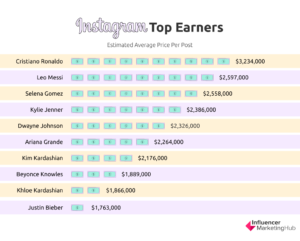Are you a social media enthusiast looking to turn your passion into profit? Or perhaps you’re a business owner who recognizes the power of social media but isn’t sure how much to invest in it.
In today’s digital age, the demand for skilled social media managers is at an all-time high, and determining how much to charge per hour can be a daunting task. But fear not! In this article, we will dive into the world of social media pricing and provide you with valuable insights and tips on how to set your rates right.
Factors To Consider When Setting Your Hourly Rate
One of the most critical decisions you’ll have to make as a social media freelancer is determining your hourly rate.
However, it’s not as straightforward as simply picking a number out of thin air. There are several factors you should consider before setting your rate.
- First and foremost, you need to take into account your level of experience and expertise in the field. If you’ve been working in social media for years and have a proven track record of delivering successful campaigns, then you can justify charging a higher rate.
- On the other hand, if you’re just starting out or don’t yet have much experience under your belt, it may be wise to start with a lower hourly rate until you can build up your portfolio and reputation.
- Another factor to consider is the local market rates for social media professionals in your area. If there’s high demand for social media services but few qualified freelancers available, you may be able to charge a premium rate.
- Conversely, if there’s an abundance of competition offering similar services at lower prices, you’ll likely need to adjust accordingly
- Additionally, think about the value that you bring to clients beyond basic social media management.
- Are you able to provide additional skills like content creation or analytics reporting? These added capabilities can justify charging a highe hourly rate since clients will be getting more bang for their buck.
Researching The Industry Standards For Pricing
Researching the industry standards for pricing is a crucial step in determining how much to charge per hour for social media services.
While it may be tempting to undercut the competition or overprice your services, understanding what others in the industry are charging can help you strike a balance that is fair and competitive.
- One approach to researching industry standards is to analyze market trends and competitors’ prices. Look at similar businesses or freelancers offering social media services and see what they charge.
- This will give you an idea of the going rate and help you position yourself accordingly. Additionally, consider factors such as years of experience, expertise, and value-added services when comparing prices.
- Another valuable research method involves talking to other professionals in the field. Reach out to individuals who are already established in providing social media services for insights into pricing strategies.
- Networking with colleagues at industry conferences or joining online forums can provide valuable information on pricing trends, allowing you to gain knowledge from those with firsthand experience.
Calculating Your Expenses And Desired Income
Calculating your expenses and desired income is a crucial step in determining how much to charge per hour for social media services.
It’s important to conduct a thorough analysis of your fixed and variable expenses, including rent, utilities, software subscriptions, marketing costs, taxes, and other business-related expenses.
Moreover, estimating your desired income is equally significant as it directly affects the rates you will set.
When calculating your expenses, consider not only the present but also anticipate any potential future costs. For instance, if you plan to expand your team or invest in new equipment or courses to enhance your skills, these factors should be factored into the calculation.
Additionally, don’t forget about personal expenses that need to be covered by your business earnings such as healthcare costs and retirement savings.
Furthermore, determining your desired income requires careful consideration of various factors.
Consider how many billable hours you wish to work each week and year while keeping in mind time for administration tasks and the occasional vacation.
It’s vital to find a balance between setting ambitious income goals while staying realistic about market demand and competition.
Evaluating The Value You Bring To Clients
When determining how much to charge per hour for social media services, it is essential to evaluate the value you bring to your clients.
This goes beyond simply considering the time and effort you put into managing their social media platforms. Instead, consider the impact of your work on their overall business goals.
- One way to assess value is by looking at the increase in brand awareness and engagement that you generate through your social media strategies.
- Are you able to reach a wider audience and attract more potential customers? How effective are your campaigns in driving website traffic or boosting sales? These are all important metrics that demonstrate the tangible results that clients can expect from working with you.
- Another aspect of value evaluation is understanding how much time and resources you save for your clients.
- Social media management can be quite time-consuming, especially for small businesses with limited manpower.
- By handling this responsibility on their behalf, you allow them to focus on other core aspects of their business operations.
- Additionally, staying up-to-date with new trends and best practices in social media marketing ensures that clients benefit from cutting-edge strategies and techniques without having to invest time or resources into learning them themselves.
Pricing Strategies And Negotiation Techniques
When it comes to pricing strategies for social media services, one approach to consider is value-based pricing. Instead of simply setting an hourly rate, value-based pricing takes into account the unique needs and goals of each client.
By focusing on the results and outcomes that you can deliver, you can justify charging higher rates. This approach requires a deep understanding of your clients’ business objectives and crafting a compelling proposal that clearly communicates the value they will receive.
In negotiations with potential clients, it’s essential to be prepared and confident in stating your price. One effective negotiation technique is to start by presenting a higher initial rate than what you are willing to settle for.
This tactic allows room for negotiation while still ensuring that you achieve a fair price for your services. Additionally, emphasizing the specific benefits and ROI that clients can expect from working with you can help validate your pricing and increase their willingness to pay.
While determining how much to charge per hour for social media may seem daunting at first, adopting value-based pricing and implementing effective negotiation techniques can lead to more lucrative agreements with clients who recognize the true worth of your expertise.
Remember that pricing is not just about covering costs but also about capturing the inherent value that social media marketing brings to businesses.
By continually refining these strategies, you’ll not only secure profitable contracts but also strengthen relationships built on trust and mutual success.
Conclusion:
In conclusion, finding the right balance for profitable rates in social media freelancing is essential to success in this competitive industry.
While setting low rates may initially attract clients, it often leads to undervaluing your skills and burning out due to an overload of projects. On the other hand, charging too high of a rate can deter potential clients and limit your client base.
To strike a balance, it’s crucial to consider various factors such as your experience level, the complexity of the project, and market trends.
Additionally, regularly reassessing and adjusting your rates based on feedback from clients can help you stay competitive while maintaining profitability.
Ultimately, finding that sweet spot between affordability for clients and adequate compensation for your expertise will not only result in higher job satisfaction but also attract long-term partners who value what you bring to the table.
Remember that it’s okay to start with lower rates when you’re just starting out but always strive to increase them as you gain more experience and prove yourself in the industry.






Be First to Comment